Going the Last Mile to Reach Every Child
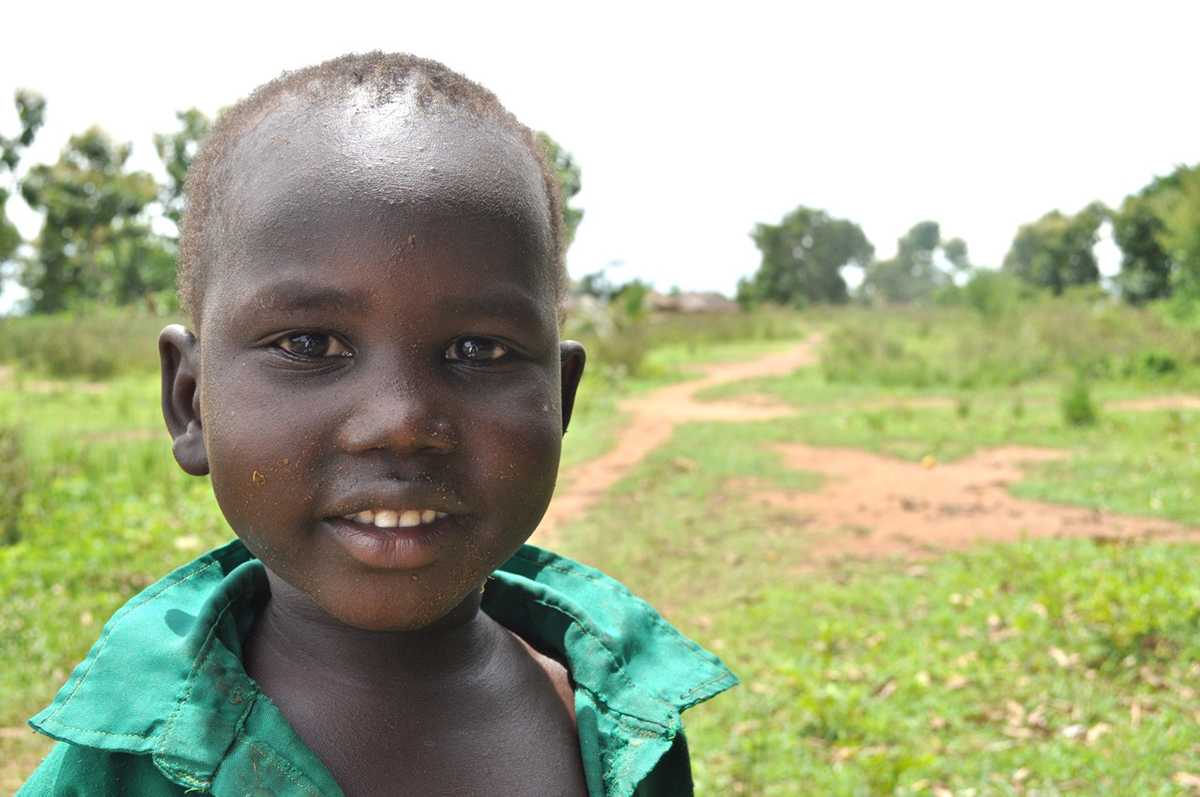
In their relentless effort to vaccinate children in some of the most hard-to-reach areas of the world, health workers, volunteers and families travel far and wide to give children access to life-saving vaccines. These pictures illustrate the lengths that individuals will go through to vaccinate children of families on the move and in hard-to-reach areas. © [Photo Credit: Steve Stewart/CDC Employee]
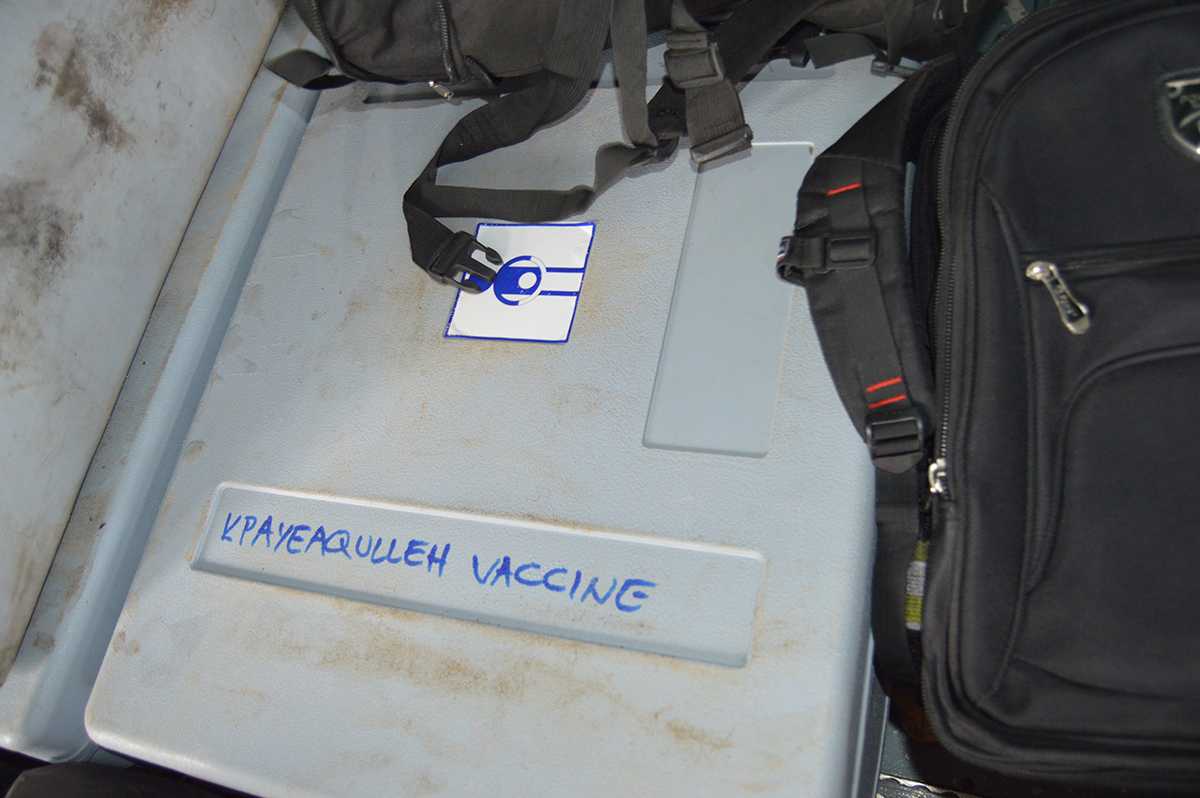
Making preparations for delivering vaccines is not as easy as it may seem. Vaccination teams have to take extra precautions to ensure that vaccines stay cold throughout the duration of the journey – no matter how far that journey may be. In Liberia, vaccination teams carefully pack vaccines into storage containers to make sure the “cold chain” remains undamaged. © [Photo Credit: Deblina Datta/CDC]
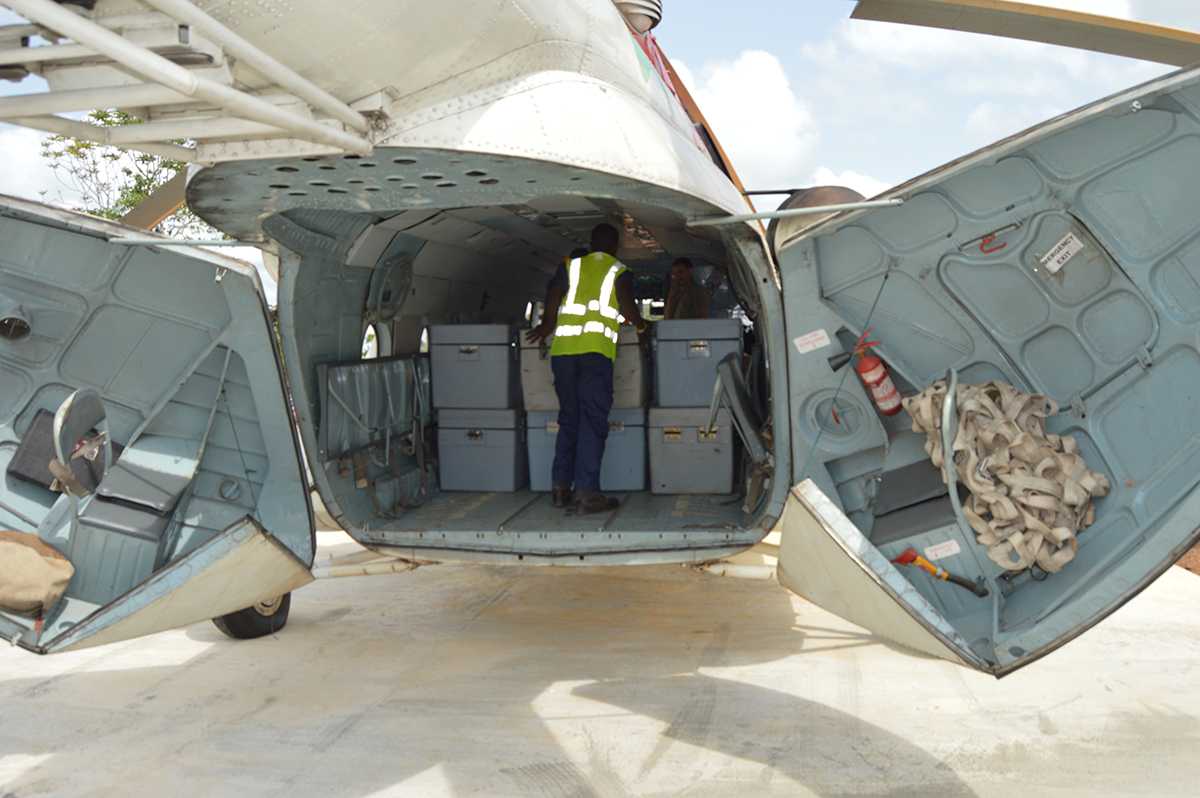
It’s not always possible to know how many children need vaccinations in a given area, especially if travel is through a region that has large nomadic or isolated populations. Vaccination teams load as many vaccine storage containers as possible in an effort to reach every child © [Photo Credit: Deblina Datta/CDC]

In some countries, cities are very populated, but there can also be communities isolated from cities by vast jungles as seen here. Vaccination teams do whatever it takes to reach these communities to perform vaccinations and supplemental immunization activities, as well as conduct surveillance so that vaccination campaigns in the future are better prepared for enhancing and maintaining immunization coverage. © [Photo Credit: Deblina Datta/CDC]
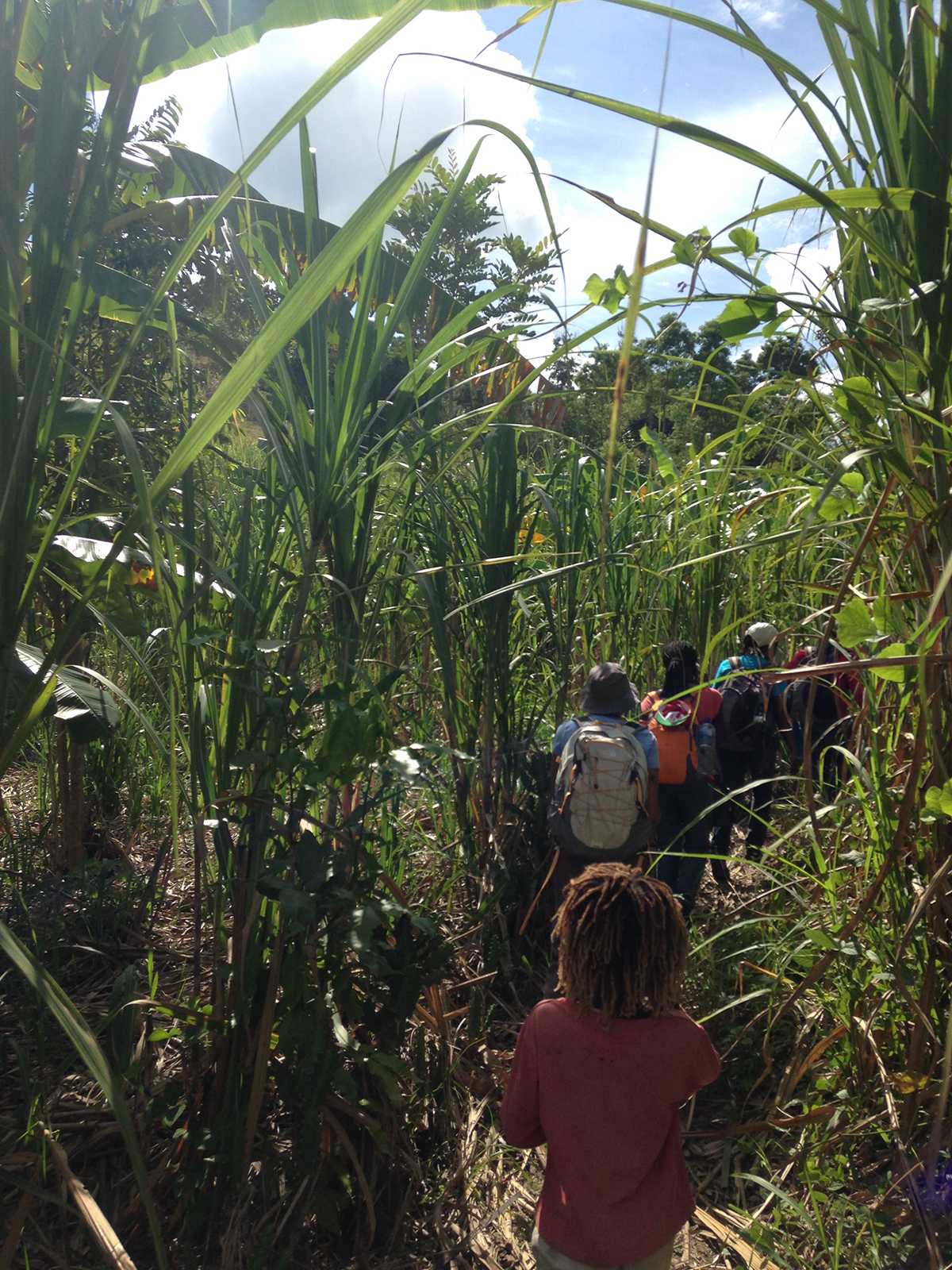
Sometimes, there are regions that do not have nearby fields that allow airplanes or have roads that allow vehicle (or even bicycle) traffic. In such cases, vaccination teams, like the ones in Haiti, and community volunteers – even children– work together to get life-saving vaccines to those who need it. © [Photo Credit: Eleanor Burnett/CDC Foundation]
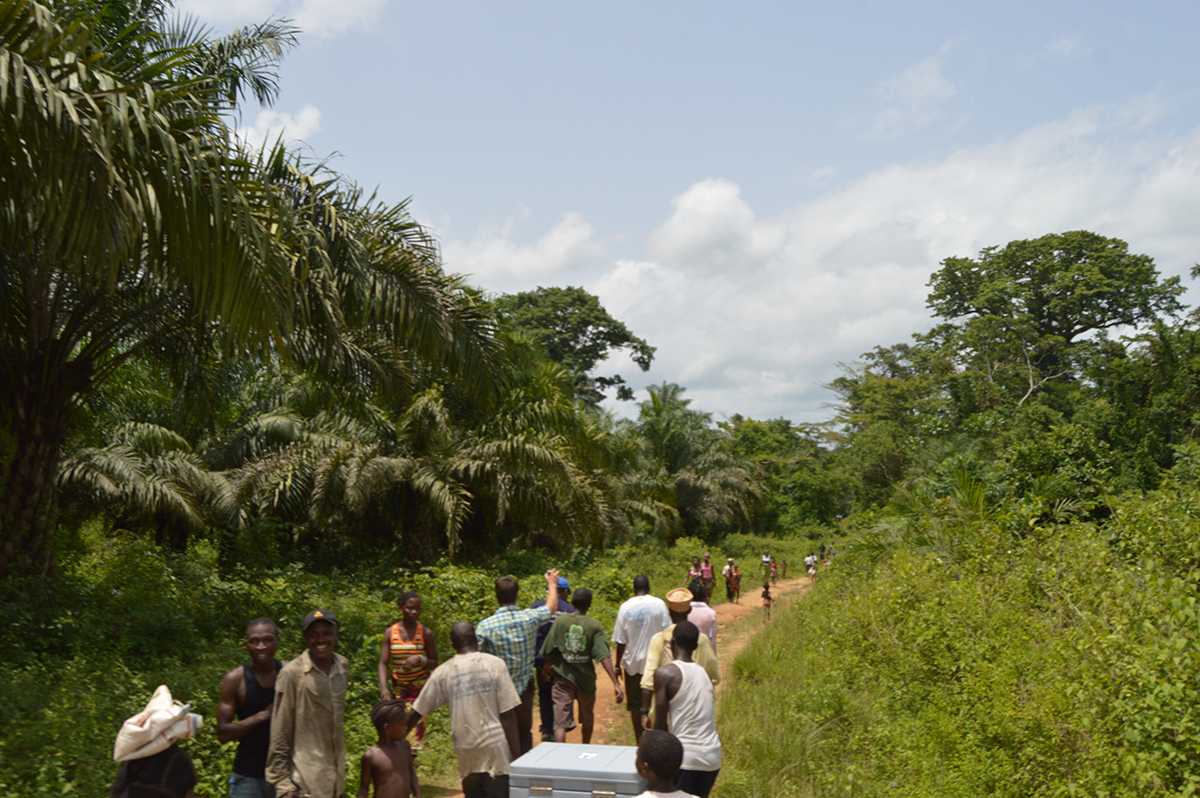
When paths are available, there are times when community members accompany vaccination teams serving as guides and translators along the way. In Liberia, vaccination teams and community members traveling through dense plant life are met by members and families from the next community in an effort to help transport vaccines. © [Photo Credit: Deblina Datta/CDC]
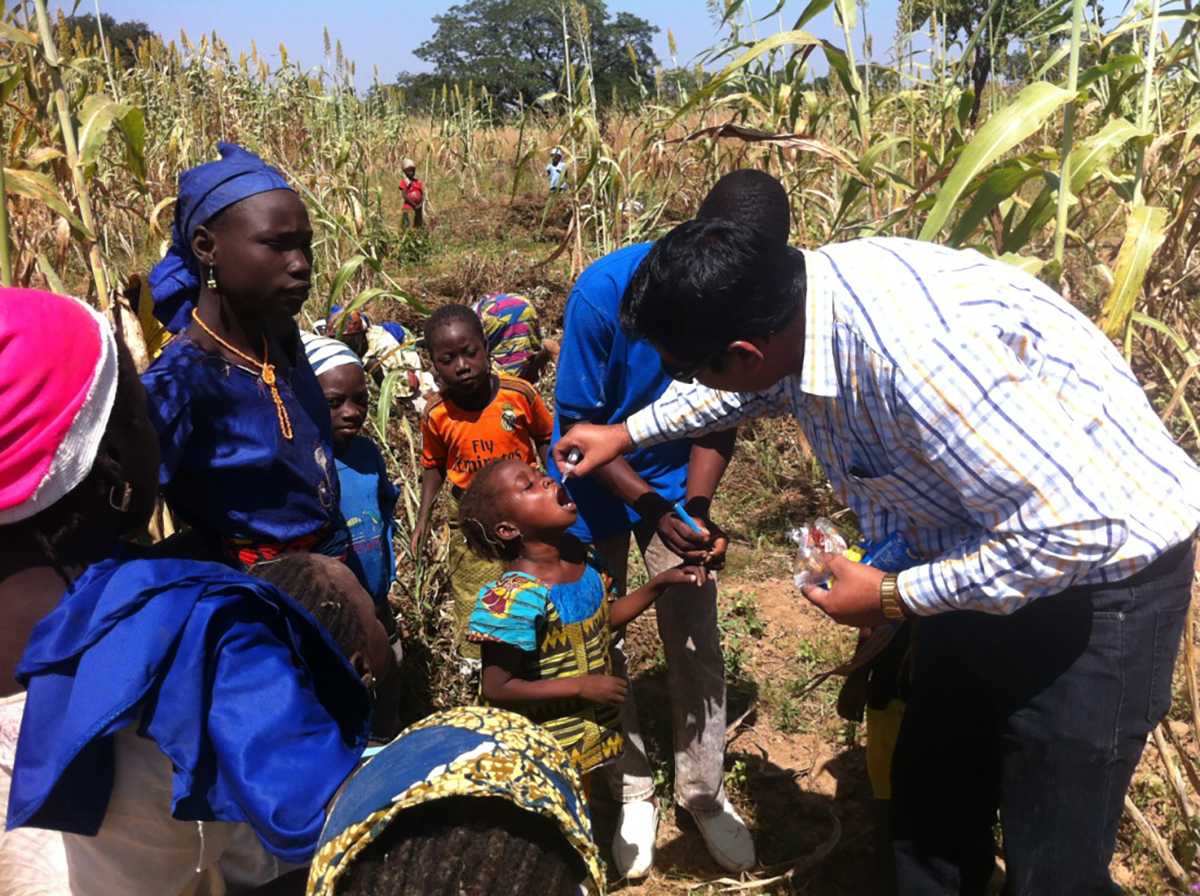
In some instances, the dense plant life that isolates communities is not a forest. In Nigeria, large crops can hide the homes of people in various communities. Stop Transmission of Polio (STOP) team member Yatender Singh administers vaccinations on a hard to reach farm in Nigeria. © . [Image from STOP Newsletter p. 1] [Photo Credit: Yatender Singh/STOP Volunteer]
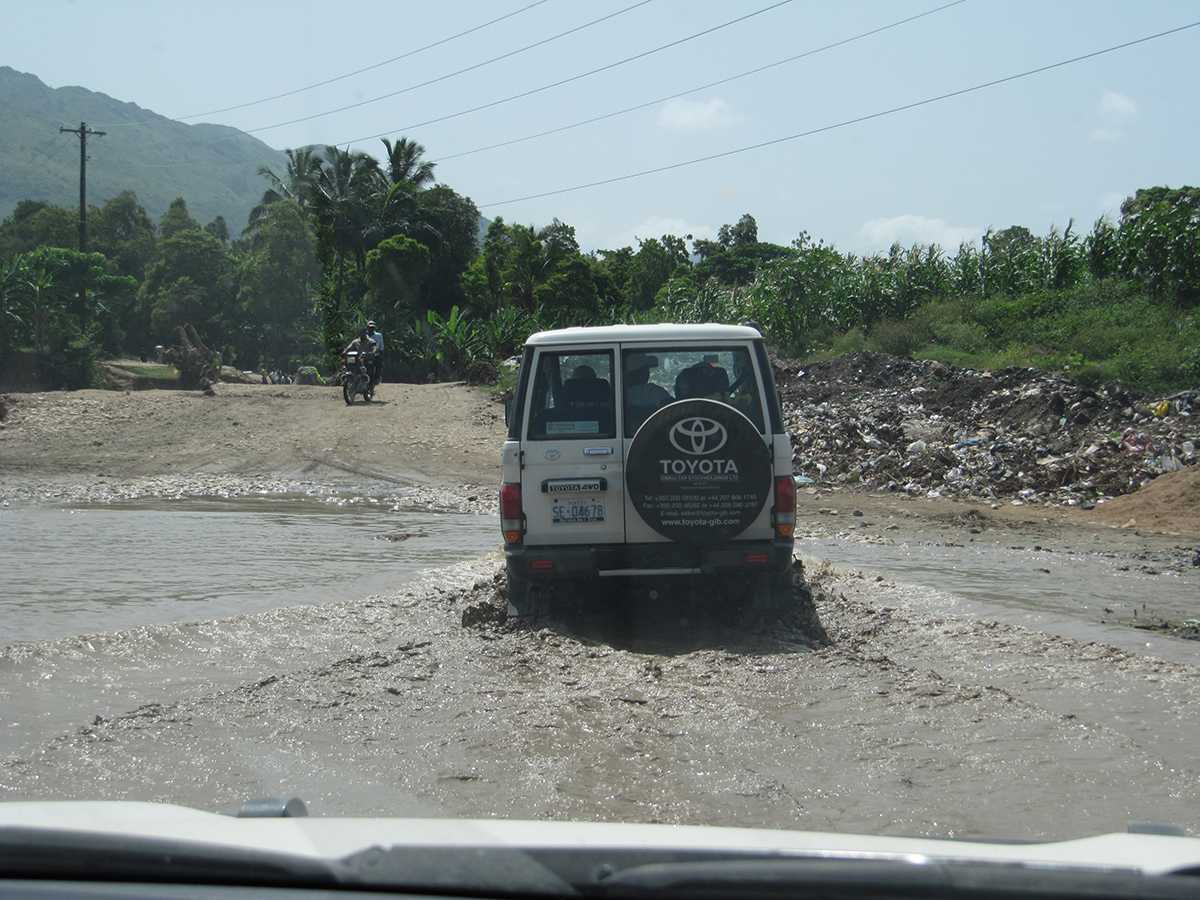
Water and weather conditions can also make areas hard to reach. In Haiti, vaccination teams encountered flooded roads while traveling to conduct immunization activities. Volunteers meet the teams to help guide them to the communities on the other side of the flooded road. © [Photo Credit: Deblina Datta/CDC]
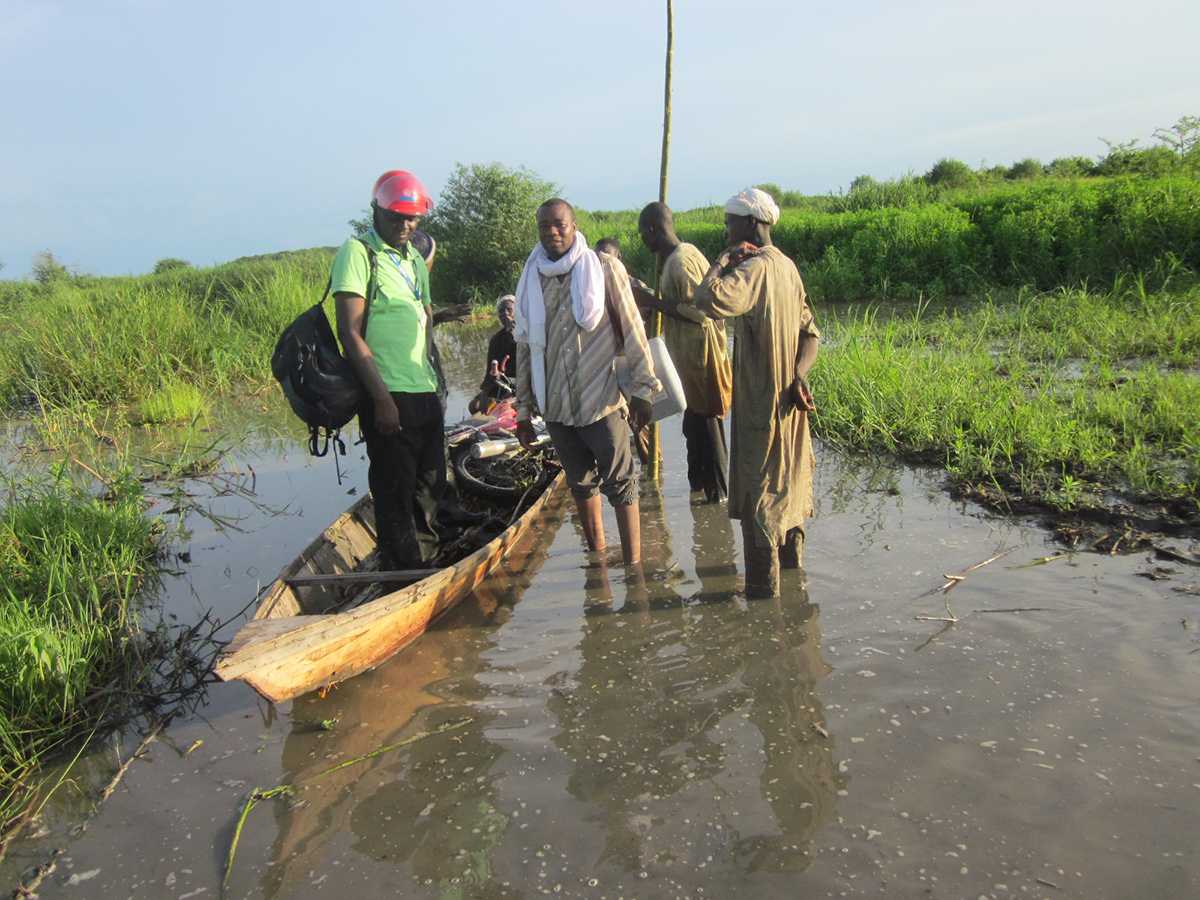
Several communities exist on small islands within certain region of Chad. Members of these communities may miss routine immunizations or mass vaccination campaigns if water levels get too high. Stop Transmission of Polio (STOP) team member and vaccinator Freddy Banza boards a canoe to travel through the flooded areas of Chad to vaccinate children. © [Photo Credit: Freddy Banza/STOP Volunteer]
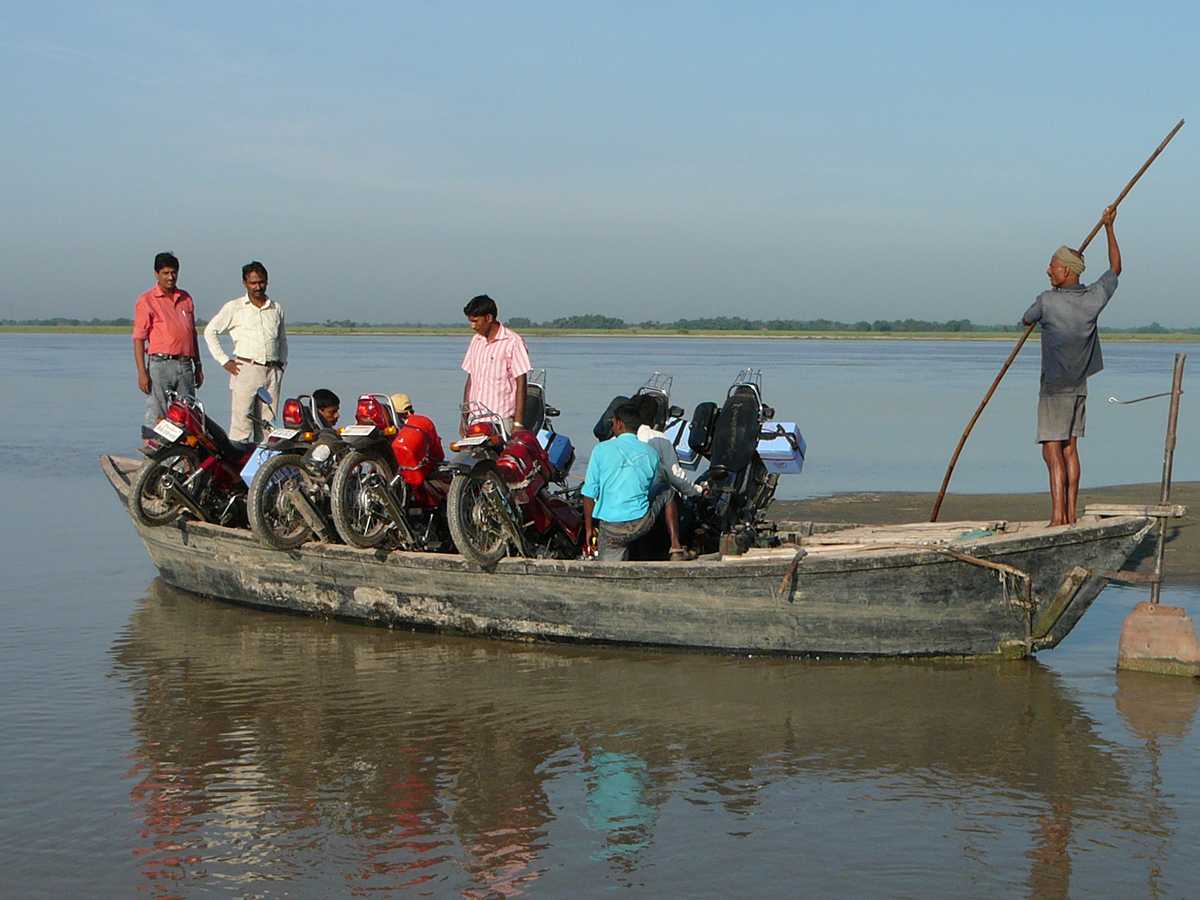
The massive size of India alone poses a challenge to vaccination teams. As seen here, vaccinators have to use motorcycles to travel between communities, but, first, they travel across a large body of water to get to the areas where other communities exist. © [Photo Credit: Ondrej Mach/Former CDC Employee]

Whether traveling on land or by water, there are unforeseen challenges faced by vaccination teams traveling within and between countries even when the paths seem clear. In Mauritania, a vaccination team encountered vehicle troubles in the midst of the dessert. Extra precautions often include staying on pre-existing paths in the sand, trying to remain hydrated, and finding things that can be used to shield oneself in the event of a sandstorm. © [Photo Credit: Ondrej Mach/Former CDC Employee]
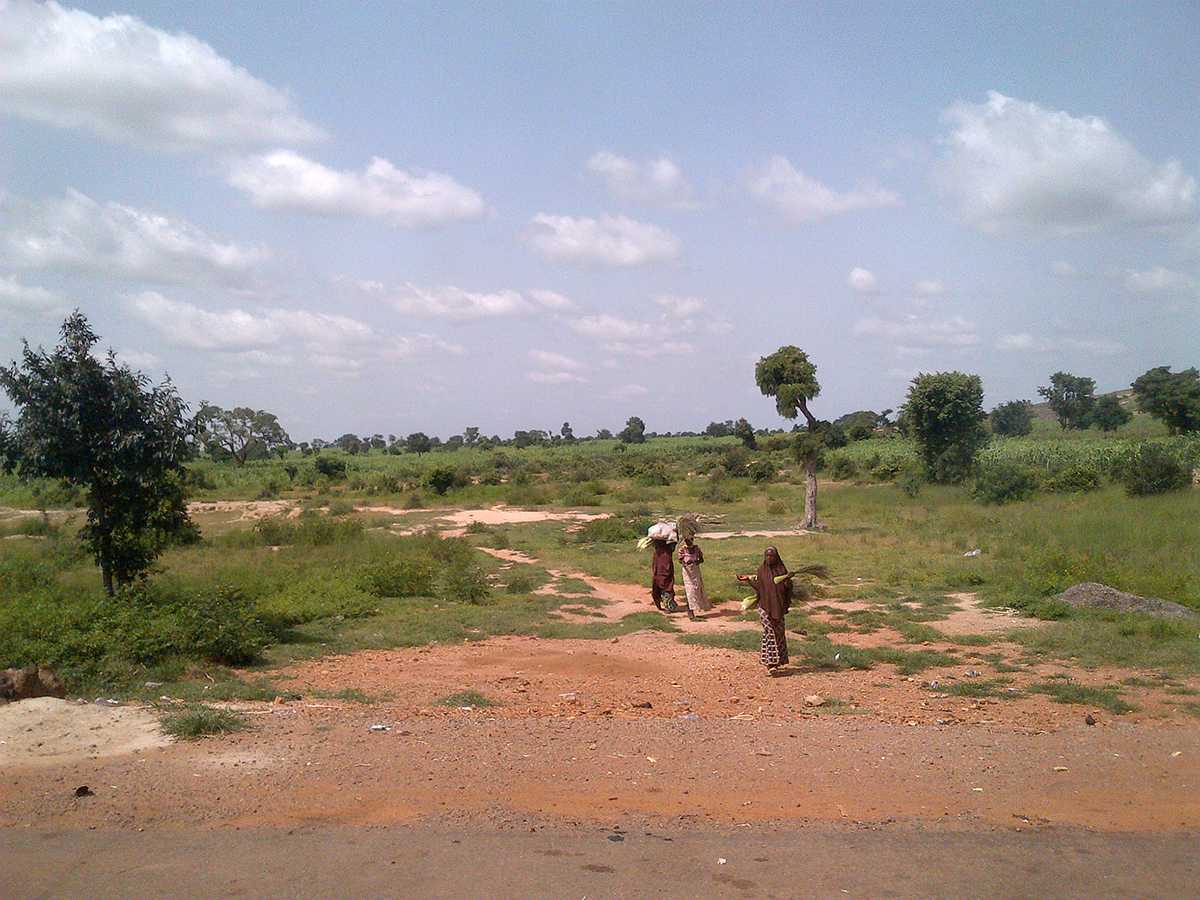
Despite being able to see far into the distance because of the open landscape in Nigeria, at times, it is still not possible to locate all communities. In this picture, vaccinators follow a family traveling in the remote area of Sokoto, Nigeria to vaccinate children. © [Photo Credit: Rajni Gunnala/Former CDC Employee]
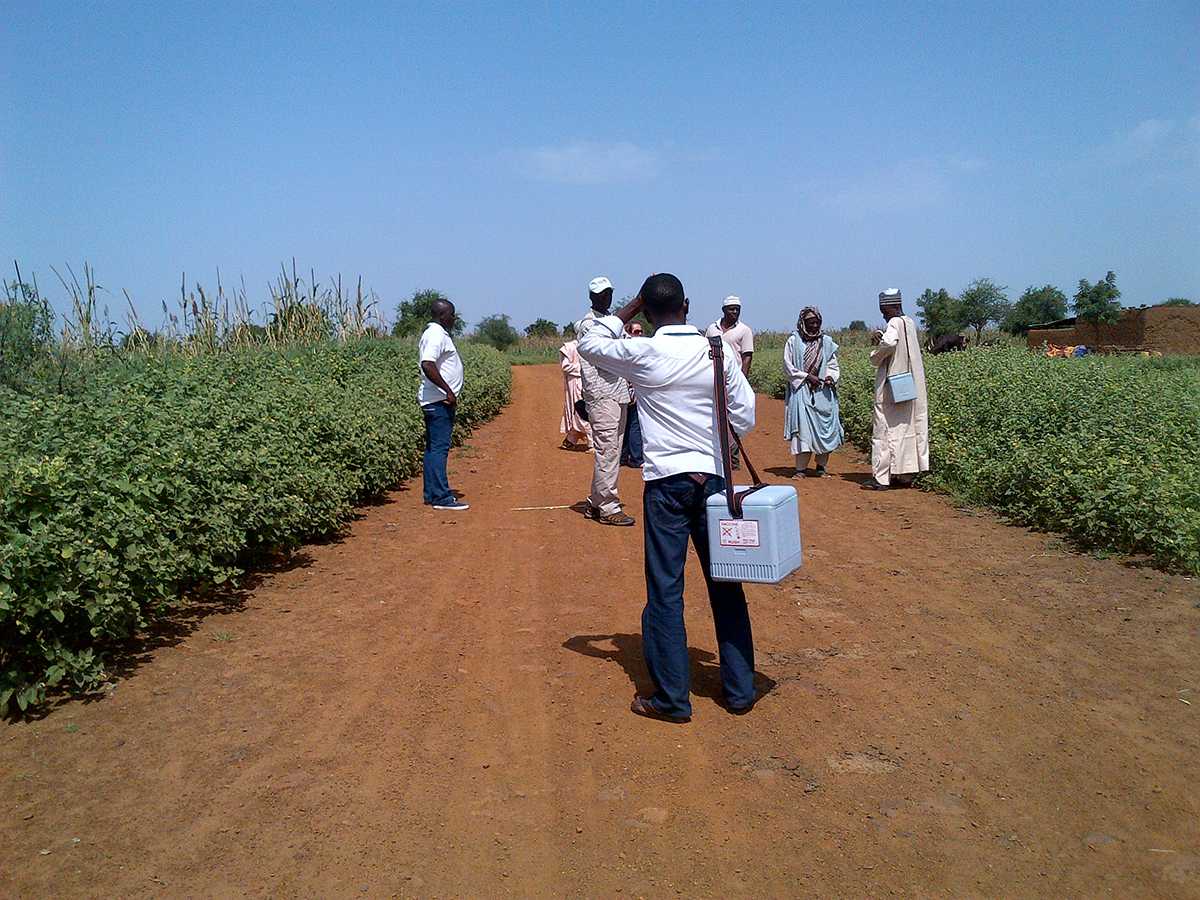
Vaccination teams and community members travel through miles of crops and fields to reach children in Sokoto, Nigeria. Nigerian natives who are part of the vaccination team often talk to the Ardo, a traditional leader who can help the vaccination teams find (and at times get access to) other isolated communities. © [Photo Credit: Rajni Gunnala/Former CDC Employee]
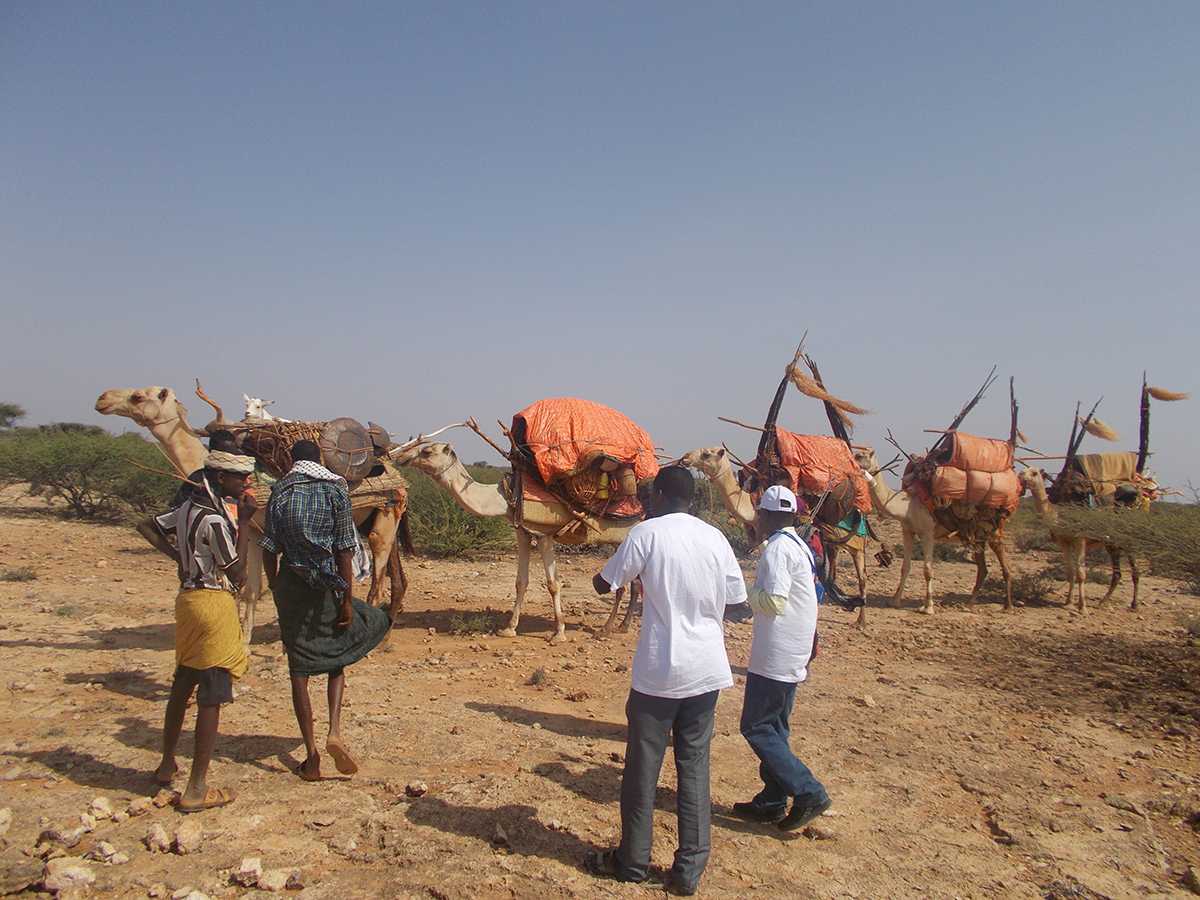
Every now and then, vaccination teams stumble upon children in unexpected places. Nomads usually move based on weather patterns in the region, so if health activities/programs and polio campaigns don’t move in the same patters, the children will not get vaccinated. Stop Transmission of Polio (STOP) participant David Nibaje and other members of an Ethiopian vaccination team approach a group of nomads who are traveling with their camels. They find the nomads protect their children while on their journey by placing them in “bag like sack” on camel’s backs. © [Image from STOP Newsletter p. 3] (although listed as page 2 in the header of the newsletter)] [Photo Credit: David Nibaje/STOP Volunteer]
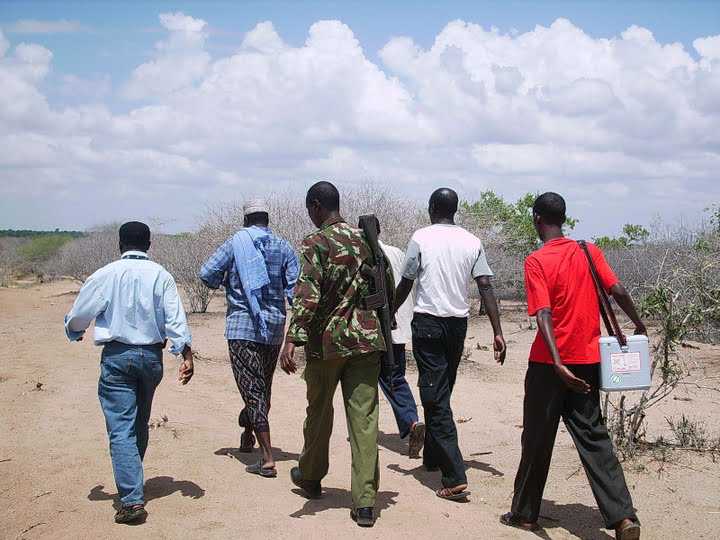
In areas of civil and military conflicts, children do not have access to health care because of a weakened (and in some cases absent) health care infrastructure. Vaccination teams still attempt to reach every child in these areas – sometimes referred to as “fragile states”. In Kenya, vaccination teams are accompanied by militia to ensure access to restricted areas and provide protection along the way. © [Photo Credit: Omer Pasi/CDC Employee]
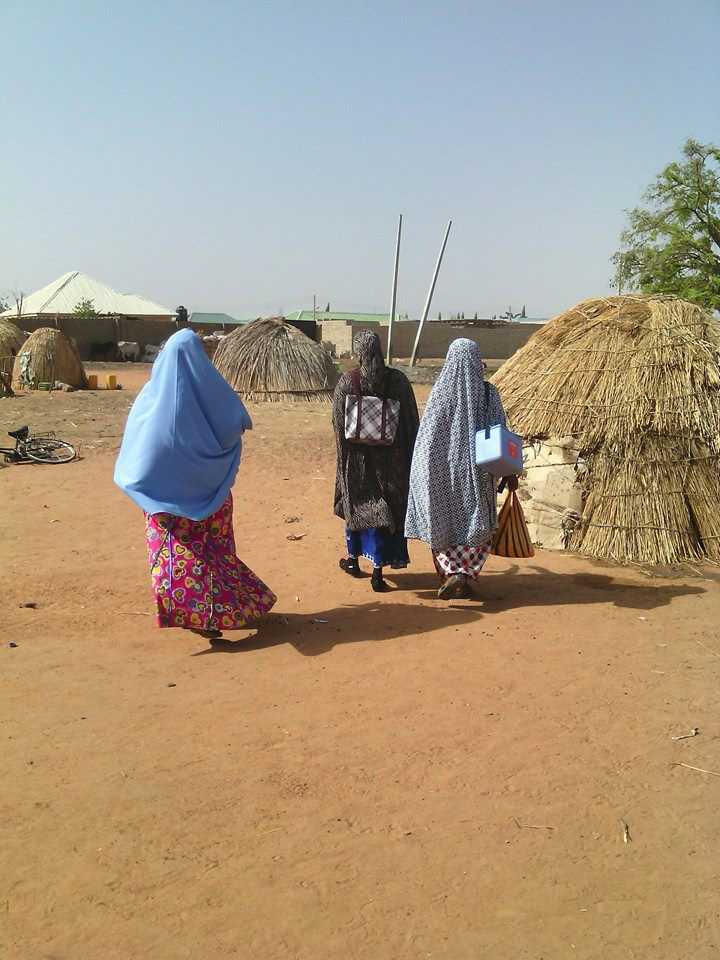
Even at the end of a long day in Nigeria, vaccination members make sure the last child in the community gets vaccinated before they leave for the day. Just like in Nigeria, the CDC, global and local partners, volunteers and families are committed to doing whatever is necessary to reach every child with life-saving vaccines no matter how long it takes or the challenges they face along the way! The lessons learned from their efforts have not only improved our chances to eradicate polio, but are also being used to improve vaccination campaigns aimed at eliminating other vaccine-preventable diseases like measles, rubella, cholera, and tetanus. © [Photo Credit: Jibril Abubakar/STOP Volunteer]
- Page last reviewed: May 2, 2017
- Page last updated: May 2, 2017
- Content source:
Global Health
Notice: Linking to a non-federal site does not constitute an endorsement by HHS, CDC or any of its employees of the sponsors or the information and products presented on the site.


 ShareCompartir
ShareCompartir